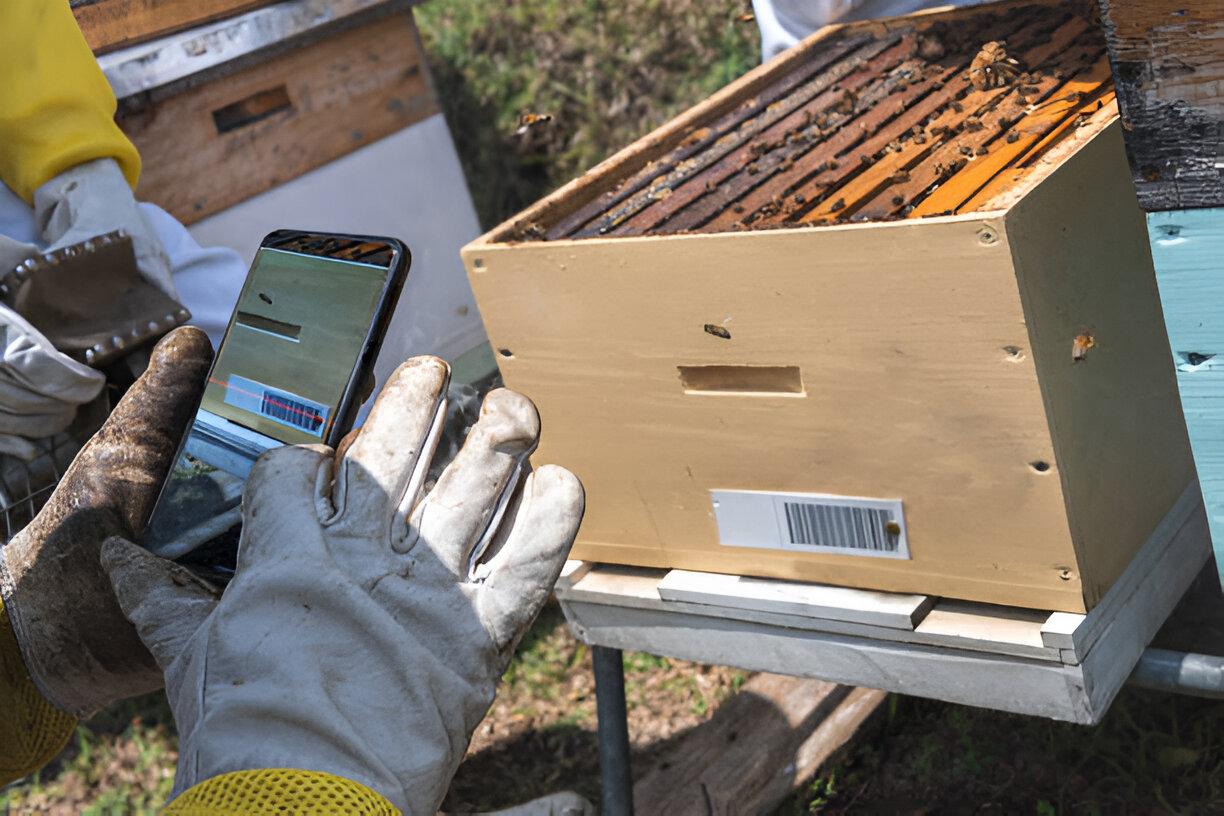Beehive Monitoring System: Revolutionizing Modern Beekeeping with Smart IoT & Sustainability

Beekeeping has evolved significantly over the years. With the surge in climate challenges and ecological threats, traditional methods alone no longer suffice. This is where the Beehive Monitoring System steps in — a groundbreaking innovation combining environmental stewardship and smart technology. From smart heat treatments for winter to using IoT in saving beekeeping, this modern system is reshaping how beekeepers care for their hives and protect their precious pollinators.
In this blog, we’ll explore the components, benefits, and impact of beehive monitoring systems, while also covering threats like the Australian wildfires, ant infestations, and the best methods of beekeeping to adopt in 2025 and beyond.
1. What is a Beehive Monitoring System?
A Beehive Monitoring System is a collection of smart sensors, wireless communication modules, and cloud-based dashboards that monitor and manage the internal conditions of a beehive. These systems track temperature, humidity, weight, bee activity, sound frequencies, and external environmental factors.
The primary goals include:
-
Early detection of diseases or disturbances
-
Ensuring optimal hive conditions
-
Preventing hive collapse due to environmental or predatory threats
This system acts like a 24/7 digital beekeeper, reducing manual labor while increasing hive health.
2. An Exclusive Role of IoT in Saving Beekeeping
The Internet of Things (IoT) plays a transformative role in modern beekeeping by enabling real-time data collection, automation, and predictive analysis. IoT devices embedded in beehives can track:
-
Bee movement and activity
-
Hive temperature and humidity
-
Honey production trends
-
Presence of predators or pests
By using IoT dashboards, beekeepers can receive alerts, download reports, and even automate actions such as ventilating the hive or adjusting heat levels. This exclusive role of IoT in saving beekeeping has proven especially beneficial for commercial beekeepers managing hundreds of colonies.
Impact of IoT in Beekeeping:
-
40% reduction in hive loss due to early detection of threats
-
60% time-saving in manual inspections
-
Increased honey yield due to optimized conditions
3. Effective Tips to Keep Ants Out of the Beehive
Ants are one of the most common enemies of bee colonies. They invade hives to steal honey and can stress or harm the bees.
Effective Tips to Keep Ants Out of the Beehive:
-
Apply Tanglefoot or Sticky Barriers: These are applied around hive stands to trap ants trying to crawl up.
-
Use Hive Stands with Moats: These water-filled barriers act as a physical deterrent.
-
Cinnamon and Diatomaceous Earth: Natural repellents that confuse ant trails.
-
Clear Vegetation Around the Hive: This removes bridges ants can use to bypass deterrents.
-
Seal Hive Cracks: Prevent ants from entering unnoticed through gaps.
Pairing these strategies with real-time alerts from a Beehive Monitoring System ensures you detect infestations before they escalate.
4. Methods of Beekeeping: Traditional vs. Technological
Beekeeping is an ancient practice, but its modern methods blend age-old wisdom with advanced science.
Traditional Methods of Beekeeping:
-
Manual hive inspections
-
Natural swarming and queen replacement
-
Observation-based disease detection
Modern Methods with Beehive Monitoring Systems:
-
Digital hive tracking
-
Temperature and humidity sensors
-
Real-time pest detection
-
Predictive analytics for colony collapse
5. Smart Beehive Heat Treatment for Winter
Bees are vulnerable to harsh winters, especially in regions with sub-zero temperatures. The smart beehive heat treatment for winter is a feature in many advanced monitoring systems. It involves:
-
Thermoregulation through heating pads
-
Insulation sensors to monitor heat loss
-
Automatic temperature adjustment to prevent bee freeze
Benefits of Smart Heat Treatment:
-
Prevents colony loss due to cold stress
-
Reduces the need for external feeding
-
Helps bees maintain energy for honey production
-
Increases post-winter survival rates by 70%
Beekeepers using this feature have reported fewer winter deaths and stronger colonies in spring.
6. Bees Are Threatened by Australian Wildfires
The Bees Are Threatened by Australian Wildfires have wreaked havoc not just on forests but on the world’s bee populations. According to ecological studies, the 2019-2020 wildfires wiped out nearly 30% of Australia’s bee habitats, disrupting global pollination patterns and threatening food security.
How Wildfires Threaten Bees:
-
Destroying nesting areas and floral sources
-
Smoke suffocating bees and queens
-
Heat killing colonies instantly
-
Long-term soil damage reducing plant regrowth
Beehive Monitoring Systems help in wildfire-prone zones by:
-
Sending early evacuation alerts
-
Monitoring heat spikes and smoke levels
-
Helping beekeepers relocate colonies before disaster strikes
This proactive monitoring could be vital in saving bees from climate-related disasters in future.
7. Real-Time Monitoring: The New Age Beekeeping Strategy
The power of real-time monitoring lies in its ability to alert beekeepers to potential issues before they become fatal. Cloud dashboards and mobile apps offer:
-
Live hive status updates
-
Geo-tracking of mobile hives
-
Behavioral pattern recognition
-
API integrations with agricultural platforms
This integration empowers farmers and beekeepers to collaborate in pollination and honey production, forming a sustainable agri-tech ecosystem.
8. Sustainability & Eco-Friendly Beekeeping Practices
Beekeeping isn’t just about honey. It’s about preserving pollinators critical to our food systems. Sustainable practices supported by technology include:
-
Avoiding chemical pesticides
-
Using solar-powered monitoring systems
-
Encouraging local flora planting
-
Monitoring hive health without constant disturbance
IoT beehive systems reduce unnecessary hive openings, preserving internal hive temperature and minimizing stress for the bees.
9. Success Stories of IoT Beehive Monitoring Systems
Case Study – Buzzr Smart Hives in India:
GoBuzzr has implemented smart hive systems across Tamil Nadu and Kerala. In one year, these systems reported:
-
25% increase in honey yield
-
80% success rate in preventing swarming
-
50% reduction in bee loss due to pests and weather
Case Study – Australian Outback Recovery:
After the 2020 wildfires, smart hives were deployed to monitor regrowth and track bee repopulation. The data helped in planting bee-friendly zones strategically.
10. The Future of Beekeeping is Digital and Data-Driven
By 2030, it’s expected that 70% of professional beekeepers will use some form of hive monitoring. Innovations on the horizon include:
-
AI-based queen behavior tracking
-
Drone-assisted hive inspections
-
Blockchain-powered honey traceability
-
Integration with climate forecast systems
This digital transformation will make beekeeping more profitable, sustainable, and bee-friendly.
Conclusion: Embrace the Beehive Monitoring System for a Thriving Future
The age of smart beekeeping has arrived. Whether you're a backyard beekeeper or manage hundreds of hives, implementing a Beehive Monitoring System ensures healthier colonies, higher yields, and reduced losses. With the looming threats of climate change, pests, and wildfires, this innovation is not just an upgrade, it's a necessity.
By leveraging IoT, adopting smart winter treatments, and following proven methods of beekeeping, we can secure a buzzing future for bees and the ecosystems they support.




